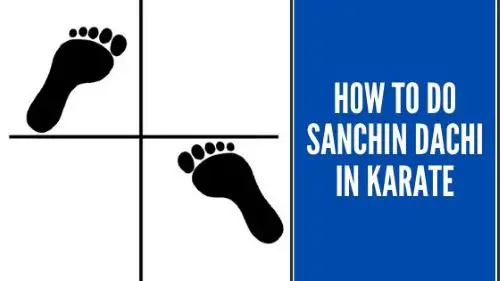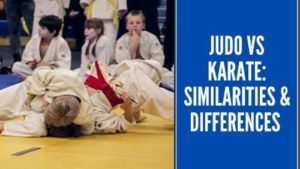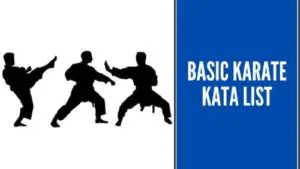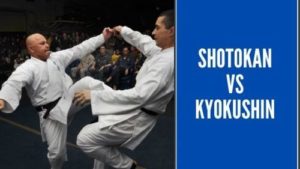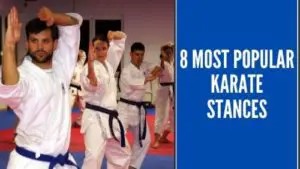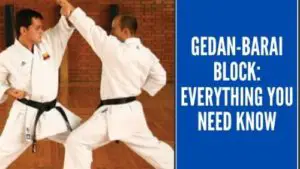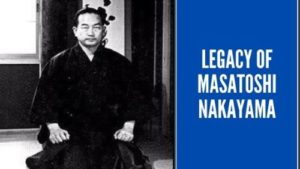The Sanchin Dachi is an essential posture in karate that allows a person to attain great stability. Sanchin Dachi is also referred to as the hourglass stance, due to the alignment of the body seen when standing in this form. It is used in most of the traditional and modern Japanese and Chinese fighting styles such as Shotokan and Okinawan. It is more commonly associated with ancient Chinese cultures.
Over the years, some of the benefits associated with this kata include calming the mind by eliminating internal chatter to allow the mind to function clearly and conditioning the body as a way of promoting its alignment. Sanchin Dachi is also believed to teach karate students the essential body structure that is required for generating power with all the movements used in karate.
Traditional karate masters believed that Sanchin kata held the key to mastering the perfect connection with your mind and spirit.
Sanchin exists in numerous Chinese martial arts. The Sanchi Dachi is used as a strengthening exercise that improves your lung capacity through the breathing techniques used, strengthens your heart, promote effective blood flow in the lymph system, and teaches you correct alignment. It also helps you develop your skeletal structural integrity and promotes relaxation.
How to Perform the Sanchin Stance
The stance is performed by first putting your feet close to each other approximately one shoulder-width apart and at a 45-degree angle. Follow this by bringing your right foot forward and aligning it with the toes of the left foot.
The right foot should be one foot ahead, which ensures that the stance will not be too wide when turning to the side from this position and you will be able to keep the groin area protected.
Follow this move by bending the knees and turning them inwards, to protect the groin. While performing this stance, you should keep the neck and spine straight and firm.
You should also tilt your pelvis upwards and tense the lower abdomen. Additionally, you can turn the elbow to the side, ensuring that your fists are at shoulder height and your chin is pulled inwards.
Some of the common mistakes that should be avoided when making this stance include bringing your knees together since this could destabilize your structure making it easy for a person to attack you. You should also ensure that your knees are slightly bent to protect the groin area.
Ensure that you do not stick your butt out as this would force you to bend your spine, which could make it impossible for you to attain the perfect stance. Your hips should be facing forward and not sideways to give you the right balance. If you are taller, you could place your feet slightly apart to ensure that you can easily turn to the sides.
Related article: Hammer Fist: How to use it Effectively
What Martial Arts Use This Style
In Shotokan, this style is commonly used in kata (form or standardized movements) while in Okinawan, Sanchi Dachi is used for self-defense and when training against an adversary (kumite), especially in Naha-te styles like Uechi-Ryu.
Some of the famous martial artists who have used this stance include Rika Usami of Japan, during the final female kata held in Paris in 2012. It is used to protect the groin region while fighting by enabling a person to turn to the genitalia to the side away from a possible frontal attack.
Who Created the Style?
Around 1918, Kanbun Uechi introduced Uechi Ryu, which was a different form of Sanchi, to Okinawa thereby creating a different path of martial art. In the Gōjū-Ryū lineage, Chojun Miyagi is recognized as the person who standardized the stances used in Sanchin kata.
Miyagi transformed the open hand’s techniques to see other forms of karate and introduced the closed fist method that is used in Sanchi kata stances such as the Sanchi Dachi. He also changed the breathing techniques to ensure that it was more direct in nature.
Books such as Five Ancestors Fist Kung-Fu The Way of Ngo Cho Kun by Alexander L. Cho can be effective in helping a person understand the origin of Sanchin Dachi and its relationship with other Sanchin kata stances.
Related article: How to do Neko Ashi Dachi Stance
Brief History of The Sanchi Kata Stance
The Sanchin Dachi kata originates from the southern part of China, which is it to be considered the origin of other traditional Chinese kata stances and fighting techniques like the Uechi-Ryu and Gōjū-Ryū techniques. The term Sanchin refers to a connection of three concepts battles, conflicts, and wars and is commonly interpreted as the battle that unifies the body, spirit, and mind.
According to history traced from the Gōjū-Ryū lineage, Kanryo Higashionna (1853-1915) was responsible for bringing back a version of Sanchin kata to Okinawa that was different from what had been practiced before in Okinawa. The students he taught passed down his lessons to other karate students, making Sanchin kata, the most common kata in this region.
Regardless of the lineage that one follows, executing the perfect Sanchin kata requires one to ensure that they grip the ground strongly, which is viewed as a technique of generating strength from the ground. You are also required to ensure that your spine is straight as the alignment of the bones and the skeletal stance generates static strength.
The kata also utilized conditioned muscles swiftly, which explains the need to ensure that your feet are not too far apart. The stance is also believed to use intent and bioelectric energy to ease movement during a fight.
Over the years, people have changed the initially Sanchin stance to suit their needs and martial art. However, the changes made by these masters follow a clear process that entails gathering information about the history of the stance and the different existing paths that were created before, analyzing the information, and them creating a new style based on the type of martial art.
Practicing Sanchin kata regularly and other forms of karate enable a person to attain better breathing and structural alignment that can be used in karate.
